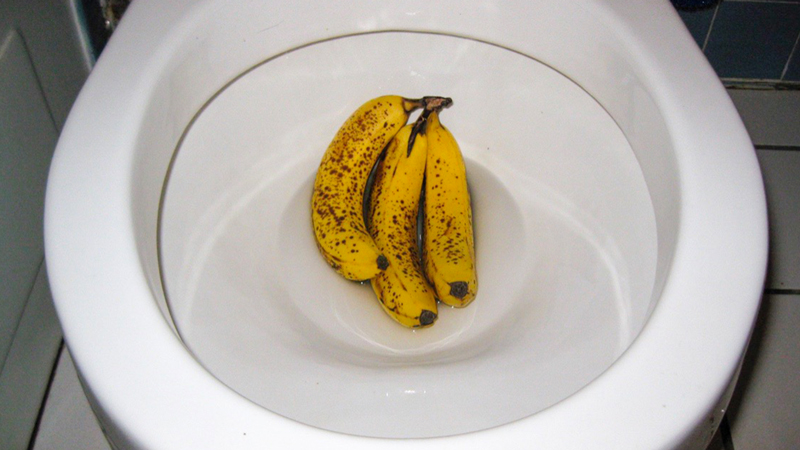Are You Capable to Flush Food in the Toilet?
Are You Capable to Flush Food in the Toilet?
Blog Article
The author is making a few great pointers on Is it safe to flush food (especially rice) down the toilet? overall in this article beneath.

Introduction
Lots of people are often confronted with the predicament of what to do with food waste, especially when it comes to leftovers or scraps. One usual inquiry that develops is whether it's alright to purge food down the bathroom. In this short article, we'll look into the reasons people may consider flushing food, the effects of doing so, and alternate approaches for correct disposal.
Reasons that individuals might think about flushing food
Lack of awareness
Some people may not be aware of the possible damage triggered by flushing food down the bathroom. They may erroneously believe that it's a safe method.
Comfort
Purging food down the bathroom might seem like a fast and easy service to taking care of undesirable scraps, particularly when there's no nearby garbage can offered.
Negligence
In some cases, people might simply pick to flush food out of large laziness, without considering the repercussions of their activities.
Consequences of flushing food down the commode
Ecological impact
Food waste that ends up in waterways can contribute to contamination and harm aquatic ecological communities. Additionally, the water utilized to flush food can stress water sources.
Plumbing issues
Purging food can cause clogged up pipelines and drains pipes, creating expensive plumbing repair work and troubles.
Types of food that need to not be flushed
Coarse foods
Foods with fibrous appearances such as celery or corn husks can obtain entangled in pipes and create blockages.
Starchy foods
Starchy foods like pasta and rice can absorb water and swell, bring about obstructions in pipelines.
Oils and fats
Greasy foods like bacon or cooking oils must never be flushed down the bathroom as they can strengthen and cause obstructions.
Correct disposal approaches for food waste
Utilizing a waste disposal unit
For homes geared up with garbage disposals, food scraps can be ground up and purged with the plumbing system. Nevertheless, not all foods are suitable for disposal in this way.
Recycling
Specific food packaging materials can be reused, reducing waste and minimizing environmental impact.
Composting
Composting is an environment-friendly method to deal with food waste. Organic products can be composted and utilized to enrich soil for gardening.
The significance of correct waste administration
Decreasing environmental damage
Appropriate waste monitoring techniques, such as composting and recycling, aid decrease contamination and protect natural deposits for future generations.
Securing plumbing systems
By avoiding the method of flushing food down the bathroom, homeowners can stop expensive plumbing fixings and keep the honesty of their plumbing systems.
Final thought
To conclude, while it may be tempting to purge food down the commode for comfort, it's important to understand the possible repercussions of this activity. By taking on proper waste monitoring methods and disposing of food waste sensibly, people can contribute to much healthier pipes systems and a cleaner environment for all.
FLUSH FOOD DOWN THE TOILET?
FLUSHING FOOD CAN CAUSE BLOCKED DRAINS IN YOUR HOME
All of the plumbing fixtures in your home are connected to the same sewer pipe outside of your home. This outdoor sewer pipe is responsible for transporting all the wastewater from your home to the Council sewer mains. Even small pieces of food that go down the kitchen sink can cause problems for your sewer. It should therefore be obvious that flushing larger bits of food, such as meat, risks a clog in either the toilet itself or the sewer pipes. Flushing greasy food is even more problematic because oil coagulates when it cools, coating the interior lining of your pipes.
THE TOILET IS NOT A BIN
Food isn’t the only thing that people shouldn’t be flushing down the toilet. People use the toilet to dispose of all kinds of things such as tampons, makeup wipes, dental floss, kitty litter and even underwear. Water goes to great lengths to educate residents about the high costs and stress placed on wastewater treatment systems simply from people flushing the wrong stuff down the toilet. It costs taxpayers millions of dollars each year, and homeowners thousands in blocked drain repairs.
FLUSHING FOOD IS A WASTE OF WATER
Flushing food is a waste of our most precious resource - water. In June this year Level 1 water restrictions were introduced to protect water supply from drought conditions. Much of New South Wales continues to be affected by prolonged drought with recent figures revealing up to 97 per cent of the state remains in drought. Depending on whether you have a single or dual flush toilet, every single flush uses between five and 11 litres of water. In the current climate this is a huge amount of water to be wasting on flushing food that should be placed in the bin (or better yet, the compost).
https://www.jabplumbingsolutions.com.au/blog/can-you-flush-food-down-the-toilet

I ran across that piece of writing on when doing a lookup on the web. For those who enjoyed our article kindly don't forget to share it. Bless you for your time. Please pay a visit to our blog back soon.
Get A Free Estimate Report this page